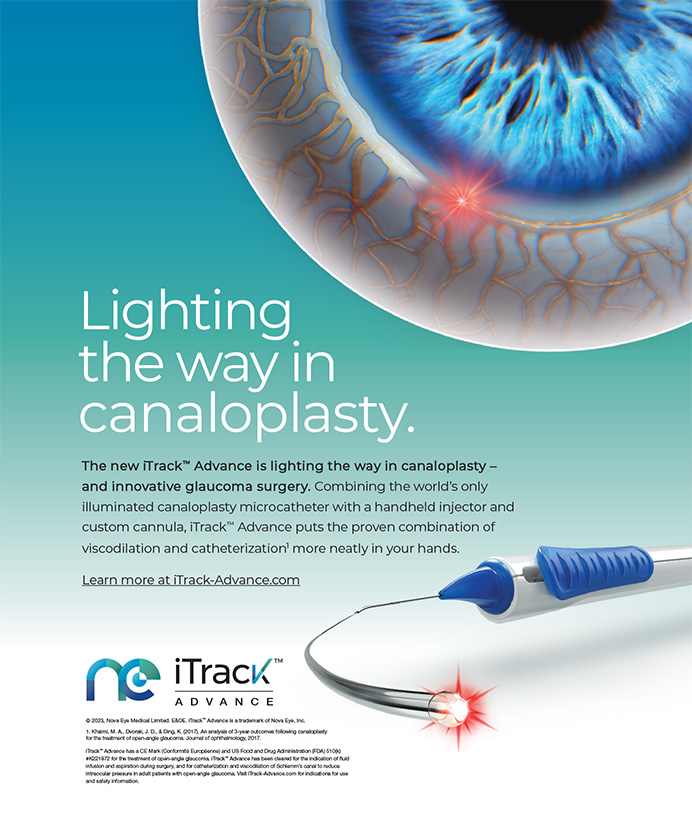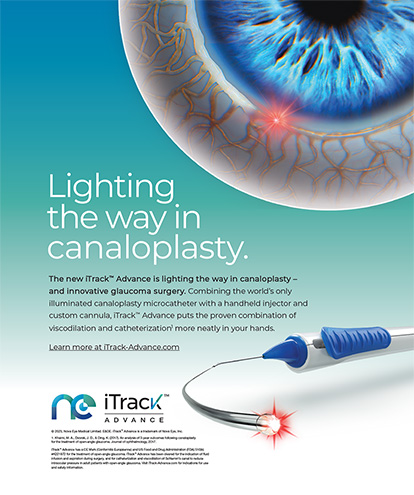Randall J. Olson, MD
I find the use of preservatives in anti-infective medications a fascinating chapter in the history of eye drops. Ophthalmology has not in recent memory had a multiuse drop available without a preservative, and there is a reason why. Bottles contaminated with bacteria pose a great threat to eyes that are already at risk for infection due to epitheliopathy or a frank epithelial defect. Topical anti-infective agents have usually contained a broad-spectrum preservative that will block the growth of yeast, bacteria, and fungi. Although antibiotics will suppress bacteria, there will always be some types of bacteria that can resist them, no matter what type of antibiotic is used. The longer a bacterium is exposed to an antibiotic, the greater the likelihood that organism will develop resistance. Antibiotics that lack a backup anti-infective to control bacterial resistance place patients at a great risk of infection by bacteria resistant to our most powerful antibiotics. Open bottles stay around a long time—just check your own medicine cabinet and see what you find.
The issue of preservatives in antibiotics developed when moxifloxacin HCl 0.5% impressively passed the FDA studies to act as its own preservative. This broad-spectrum antibiotic successfully suppressed growth in an Aspergillus and yeast species. No antibiotic, however, is immune to bacterial resistance, nor will one ever prove excellent at suppressing a broad spectrum of either yeast or fungi. Therefore, to me, the contamination risk of a nonpreserved antibiotic will be substantially higher compared with the addition of BAK, an antiseptic that has stood the test of time as effective in suppressing a broad spectrum of infectives. How much higher? Only time can tell.
BAK, like all chemicals, is a double-edged sword. It has three important advantages. First, it has proven itself in resisting contamination, which commonly occurs with multiuse bottles. Second, it enhances the penetration rates of antibiotics, an advantage I believe nonpreserved agents will lack. Third, BAK increases antibiotics' killing power and speed to kill.
BAK's downside, admittedly, is that it can cause epithelial toxicity. When tied to an antibiotic that is friendly to the cornea, however, it does not cause ocular problems in the majority of patients. The antibiotic Ocuflox (ofloxacin; Allergan, Inc.)—which is widely used in bacterial ulcers, for postsurgical treatment, for infective prophylaxis in LASIK patients, and in patients who have abrasions—uses a very low concentration of BAK (0.005%) and has performed well on corneas.
Is ZYMAR 0.3% with BAK really harder on the cornea than VIGAMOX 0.5% without it? Ophthalmology awaits a present product, antibiotic-to-antibiotic comparison study to evaluate penetration rates as well as final intraocular concentrations in the cornea, anterior chamber, or vitreous. Of course, there are cases for which I prefer a nonpreserved antibiotic, including nonhealing corneal ulcers and neurotrophic disease. Overwhelmingly, however, for prophylaxis after corneal or cataract procedures, I consider BAK a potential friend if toxicity is minimized. At this point, I feel uncomfortable without a broad-spectrum preservative involved with my use of medication for the majority of my patients.
Robert J. Noecker, MD
Understanding the effect of BAK in antibiotics is important in light of the recent controversies over preserved versus nonpreserved or self-preserved antibiotics. Studies in the literature have examined BAK in cell cultures, animal models, and human models, and found that a high concentration of the preservative in the range of 0.02% used over a longer duration can cause significant damage to the corneal surface. Corneal cells can separate and peel off the surface, and lymphocytes may infiltrate the conjunctiva and lead to inflammation that can affect the outcome of surgical procedures and cause dry eye symptoms. Moderate concentrations of the agent (in the range of 0.01%) simply cause cells to die off via apoptosis. Lower concentrations of BAK (in the range of 0.005%) induce minimal changes to the cornea, will not cause cell death, and are often fairly well tolerated by the ocular surface over time.
The studies I have conducted on BAK's toxicity have involved glaucoma medications, chronic dosing in both rabbits and humans, and the resulting inflammatory changes that occur with high concentrations of BAK in various drugs. One study examined artificial tear formulations with varying preservatives. Again, formulations with high concentrations of BAK, when frequently dosed, disrupted the integrity of the corneal surface cells much more than did nonpreserved drugs or drugs containing alternative preservatives. Newer generations of eye drops all use either lower concentrations of BAK or an alternative preservative. Despite its risk of toxicity, BAK offers a distinct benefit against infectious disease in ophthalmology. It acts as a preservative for eye drops to inhibit infectious organisms from growing within the bottle. It works well against some bacteria (gram-positives more than gram-negatives), but also against viruses, fungi, yeast, and some protozoa. BAK is used in many commercial applications as well as medically as an antifungal agent for infections around finger- and toenails. In new antibiotics such as ZYMAR, BAK will help to kill most of the bacteria, but it will also act against infectious organisms that the fluoroquinolone antibiotics do not, such as viruses, mold, and fungi that occur naturally on patients' hands and eyelids. Providing this extra layer of protection are the reasons why preservatives are added to antibiotics and why antibiotics that lack them may give surgeons pause. VIGAMOX, for example, is a potent self-preserved antibiotic that will kill the majority of bacteria but may not offer sufficient protection against viruses, mold, and fungi. In refractive surgery in particular, mycobacteria pose a significant infectious threat to patients (it is the leading cause of post-LASIK corneal ulcers). BAK is able to combat this and other atypical bacteria that do not respond to unpreserved antibiotics. Unpreserved antibiotics may be a particularly poor choice for patients with a corneal ulcer or a postsurgical abrasion, who may be at an even greater risk for developing bacterial and fungal infections.
The risk/benefit ratio of the preserved versus nonpreserved antibiotic remains to be seen. While chronic dosing over months and years with high levels of BAK is not desirable if other alternatives exist, short-term dosing for days or weeks at low levels does not seem to cause significant problems on the ocular surface. BAK has a good track record of preserving ophthalmic medications. The benefits of BAK may outweigh the risks of going without it in the anti-infective arena.
Henry D. Perry, MD
Personally, I was surprised that VIGAMOX became available without a preservative. The lack of a preservative is advantageous in drops that are taken for long periods of time; for example, glaucoma medications that a patient takes for 20, 30, or 40 years. On the other hand, the usual course of therapy for an antibiotic is between 7 and 10 days, a duration for which the presence of a preservative is not significant in terms of toxicity to the ocular surface.
Regarding the benefits of a preservative in antibiotics, it helps stabilize the antibiotic against extremes of temperature. Although preservatives have a slightly cytotoxic effect, BAK at 0.005%, which was in Ocuflox and is currently in ZYMAR, has been proven over the last decade to be very well tolerated. This cytotoxicity increases the distances between the cellular bridges and epithelial cells transiently, thereby allowing better penetration of the drug into the target tissue (and in this sense is also an advantage). The cytotoxic effect usually clears within one-half hour to 1 hour after the drop is administered.
Most importantly to me, however, are the infectives such as fungi and acanthamoeba that are totally unaffected by antibiotics. The idea of an unpreserved antibiotic surprises me in light of the risk of infection by these microorganisms with indiscriminate use. It is not inconceivable for an unpreserved antibiotic to be contaminated by a fungus if transported in an unclean or moist environment. In addition, the VIGAMOX packaging actually features a warning label, which I have never seen before on an antibiotic. It reads, “Do not touch drop or tip to any surface, as this will contaminate the solution.” The presence of the warning label makes me wonder about the efficacy of not having a preservative in an antibiotic.
Randall J. Olson, MD, serves as Director of the John A. Moran Eye Center, as well as Chairman at the University of Utah Department of Ophthalmology in Salt Lake City. He holds no financial interest in any product mentioned herein. Dr. Olson may be reached at (801) 585-6622; randall.olson@hsc.utah.edu.Robert J. Noecker, MD, is Associate Professor of Ophthalmology and Director of the Glaucoma Service, Residency Program, and Clinical Studies Program at the University of Arizona in Tucson. Dr. Noecker is a consultant for and receives research funding from Allergan, Inc. He holds no direct financial interest in any products mentioned herein. Dr. Noecker may be reached at (520) 321-3677; rnoecker@eyes.arizona.edu.
Henry D. Perry, MD, serves as Clinical Associate Professor of Ophthalmology at the Weil Cornell School of Medicine; Chief of the Cornea Service at NASSAU University Medical Center; and Medical Director of the Lion's Eyebank of Long Island. He is a consultant for Allergan, Inc., but holds no financial interest in any product discussed herein. Dr. Perry may be reached at (516) 766-2519; hankcornea@aol.com.


